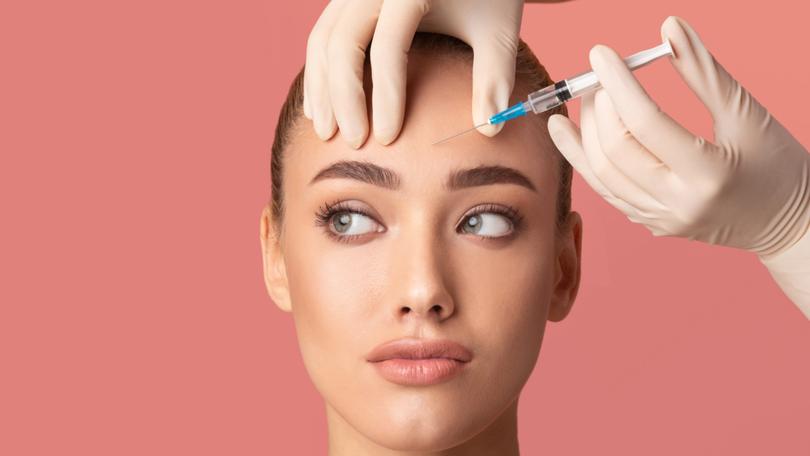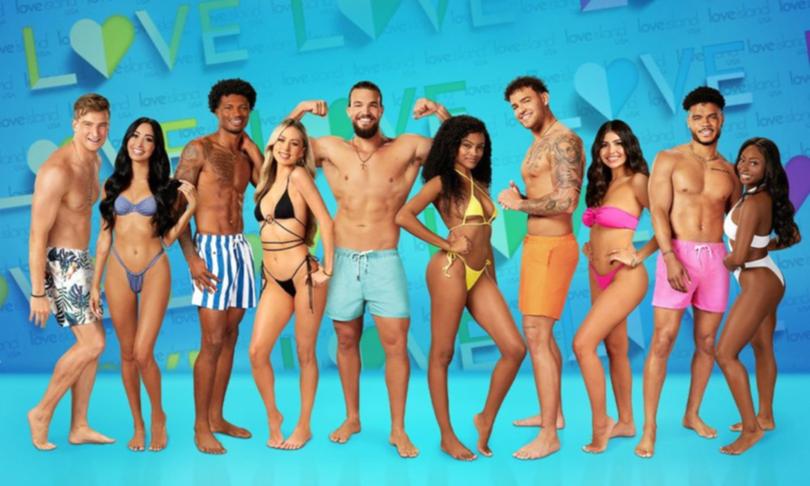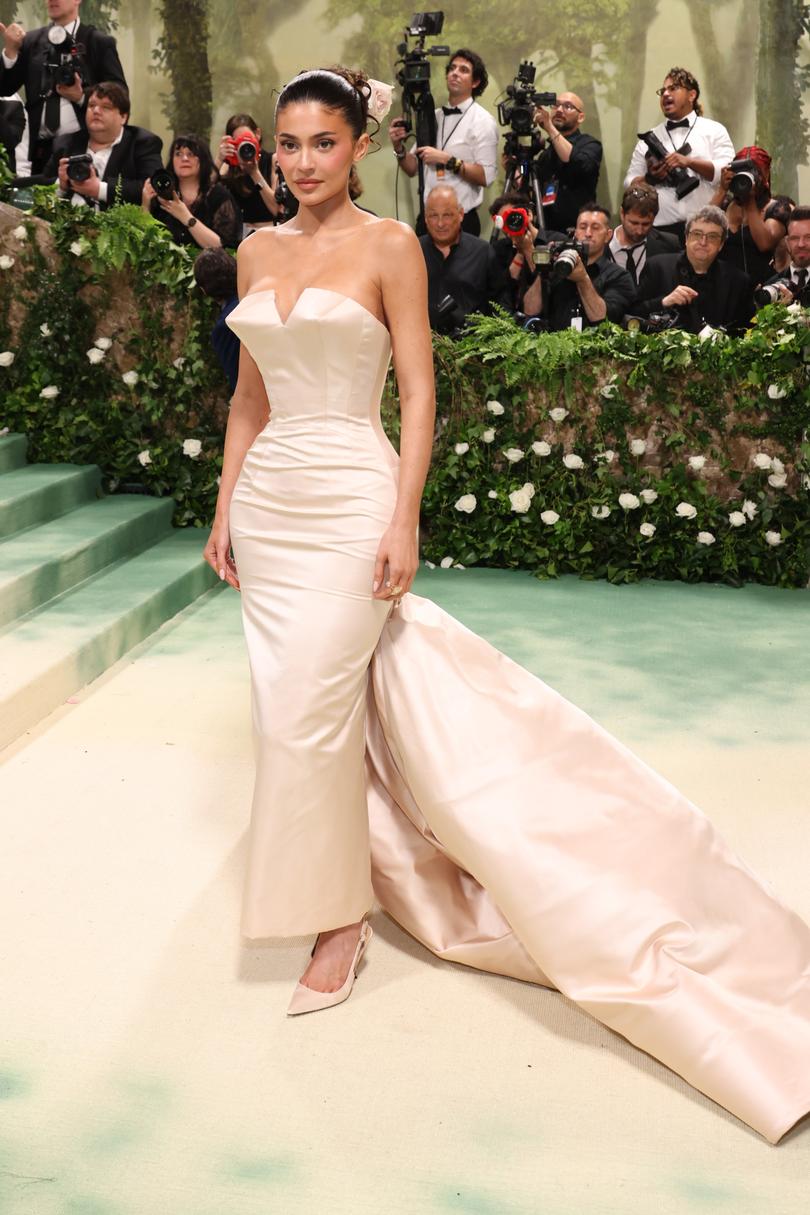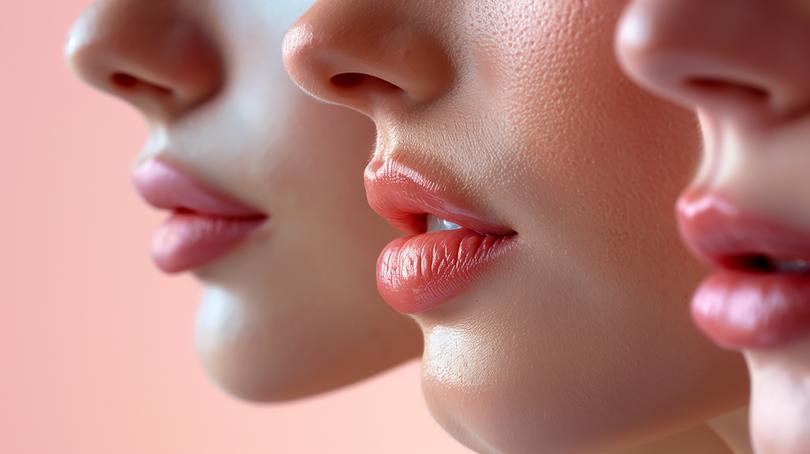LIZ JONES: Why do so many young women now want to pay for the same Love Island face?

It’s called the Love Island Look.
An over-large, smooth forehead above dark, multiple rows of caterpillar lashes. A slim face, narrow nose, with a razor-sharp ‘snatched’ jawline. Lips like pillows hovering above a chiselled chin and a swan neck.
Another pillow, this time of breasts, and highly decorated talons.
Sign up to The Nightly's newsletters.
Get the first look at the digital newspaper, curated daily stories and breaking headlines delivered to your inbox.
By continuing you agree to our Terms and Privacy Policy.For a while now, as the Love Island trend filtered down from reality stars to online influencers to ordinary twentysomethings across the UK, I’ve felt that these wonderful, vibrant young women are selling themselves, and their natural beauty, short.
It’s as though all our pretty, unique girls next door have been replaced by strange aliens who all look the same!
I’m 66 and have been obsessed with my weight and looks for most of my life. I know what it feels like to want to conform to a trend in my case, the status-defining thinness of the 1990s but still find myself baffled by the ubiquity and sameness of the Love Island face, which takes serious dedication and, in some cases, thousands of pounds worth of surgery to achieve.
So I decided to go and ask some of the women themselves why they were spending their hard-earned cash on an identikit pout.
Sandra* is a 24-year-old hairdresser in Liverpool. She is warm, friendly and not taken aback when I ask her what work she has had done.
“Semi-permanent lashes, two rows,” she says, referring to glued-on eyelash extensions.
“My lips. Botox. I do my own nails. I had my breasts made bigger. Hair extensions. I sleep on silk to keep my skin soft and avoid hair tangles on my extensions.”

How does she afford it: £250 for lip filler, and hundreds for lashes, which, of course, last only a few months?
“I saved while I was at university.”
But why does she feel compelled to look like this — who does she look up to? The girls on Love Island, yes, of course (they don’t just parade perfect cheekbones, but the prospect of a lucrative spin-off career in influencing). But, surprisingly, she also names 1980s film character Elvira, all vampiric hair and red mouth, and British screen star Fenella Fielding. Which only proves there is something retro about this look: young women harking back to a bygone age.
Sandra also says she had a skin condition which caused her to lose collagen. She lost weight, so her breasts shrunk, she says, as though she needs me to understand her motive isn’t only vanity. Every girl who parades past looks just like her. When I tell Sandra this, she says that is the point. “I worked in Scotland for a while, but I looked out of place there. Here, I fit in, no one comments.”
Do her parents approve? “Oh yes, Mum is fine with it.” Sandra has a degree, but I’m afraid I don’t think the rule of pulchronomics — a scientifically proven prejudice that means beautiful people are more successful at work and have happier relationships — really applies to women who look like this.
My honest feeling is that an employer, looking at a girl with a Love Island face, will think she is frivolous, afraid of hard work, and only after a meal ticket from a man. That evening, I meet two young women in a bar.
Becky is 27 and a model. Chloe is 22 and works as a travel agent. It’s odd, talking to them, as they tell me the men they fancy aren’t perfect, but they are attracted to them anyway as “we like them to look rough and ready”. They feel their Love Island faces get them male attention, which is what they crave.
“We have to be perfect.” Becky has had a nose job, chin and jaw work (using filler), Botox and lip filler. Together it all cost £5,000 but, “I’m happy”. Why her nose? “It was bulbous. I knew once I’d fixed it, I’d be 100 per cent happy.”
Their biggest influence is Kylie Jenner, the 27-year-old model, beauty mogul and scion of the Kardashian clan.
Don’t they agree that on the cover of September’s British Vogue she looks just like her mother, Kris Jenner?

They admit she does, revealing that the Love Island look isn’t about appearing young per se; they already own that. It is about looking hyper-filtered.
“The girls are stunning,” Becky says of Love Island contestants, who include Megan Barton Hanson, adding she wants to audition for the show. Chloe has had her lips enhanced (‘they were thin’), and added rows of lashes. “I want my nose made smaller next.” They show me a filter on their phone as if by way of explanation. I video a selfie, then apply it – and I look so incredible, bee-stung, ‘snatched’, I keep replaying it!
Trouble is, when my real face swims into view, the disappointment is crushing. I have to look like my filter! No wonder their young heads are skewed. At the end of the evening, I tell the two women they have been brainwashed. This look isn’t fashionable, and surely natural beauty is more desirable.
Chloe disagrees: “If it’s not going to harm me, I’ll do it.” Adds Becky, somewhat ironically: “It’s about choice. It’s about attracting a man who likes me for me.”
Why Botox in her 20s? “I was getting wrinkles.” They believe what they have had done, what they still plan to do (both believe their noses need more work), is their choice. A justification is wheeled out. “Why don’t we have any body hair? It’s itchy. It’s nothing to do with porn. I think we know the difference.”
What intrigues me is how self-assured and open these women are.
It’s not as though they want to feel more confident — they already are very confident (although perhaps they weren’t before all the work). I
I tell Becky and Chloe that young women were fed domesticity in the 1950s. In the 1960s, when magazines realised women were spending less not just on washing machines but also clothes, Vogue decided to focus on the body instead. The writers and the commercial forces they served made us look inwards. Diet-related articles increased by 70 per cent in just four years, from 1969 to 1973. AND just as fashion has a constantly changing catwalk to keep us spending, so the array of procedures available has mushroomed. I’d never heard of Lemon Bottle, a pineapple extract to shrink fatty areas. Or Profhilo, an injectable moisturiser.
How about perfect Turkey teeth? Or filler for the ‘unsightly trough’ beneath your tear ducts (who even knew that was a thing)? Or brow lamination? Or how about we line up for a surgical-grade scalpel to remove vellus hair, known to you and menas entirely inoffensive peach fuzz?
Yes, that’s a thing too. All of these I first learned about while talking to young women with the Love Island face. I meet Dr Fiona MacRae, who performs aesthetic procedures in eight clinics across Liverpool. She worked for many years in the NHS as an anaesthetist, but for the last ten has worked in the burgeoning beauty industry in the NorthWest.
“I am increasingly seeing women wanting procedures, mainly injectables, aged 19, 20,” she says. I had a breast reduction at age 29. I felt I knew best — not realising I would have to live the rest of my life with ugly, puckering scar tissue, and debt as well. I thought, post-MeToo, that young women would be more savvy, more into self-care, than I was, addicted to models in Vogue. I can understand why a mum — newly divorced, children all grown up — might want a refresh, but to have intervention at such a tender age?
Dr MacRae points out that faces aren’t fully formed until adulthood: the nose won’t stop growing until around 16, the jaw at 18 (later in boys), and breasts typically around 18 or 19.
She would never recommend breast or tummy surgery until after childbirth. But she agrees, young women are impatient: they have fast fashion; they want fast faces. Before treatment, she always tries to ascertain if a woman is suffering from body dysmorphia. The tell-tale signs are more and more frequent requests; an obsession or fixation on supposed flaws or imperfections that are not apparent to anyone else, and increasingly inappropriate requests, for example, asking to place more filler in an already over-plumped upper lip. But not every practitioner is so diligent.
Indeed, one woman I meet tells me she has “preventative” Botox, which is ludicrous. Since the Botulinum toxin only paralyses muscles for up to three months, trying to stop any wrinkles ever forming means regular injections for life, and no one truly knows what the consequences of that might be.
Lip filler, too, lasts up to six months, and then needs to be done again. Almost all procedures have built-in obsolescence, meaning you fork out again and again. MOST of the young women I speak to spend about £500 a month on tweakments, not including cosmetics. In fact, the conventional skincare industry is pooh-poohed by these girls as ineffective: they want to drill deeper.
Dr MacRae’s most common request, after filler and lips, is to slim the sides of the face (the masseter muscle), and to give the aforementioned “snatched jaw line”, a la Margot Robbie.

How do you do such a thing? You could try EMface Submentum, which uses electromagnetic stimulation on the neck’s deep digastric muscles – previously only accessible via a deep plane surgical necklift — plus other technology involving radiofrequency (from £250 a session). Four are normally required. Or you even could try buccal fat removal, from £2,200, where fat is permanently removed from the jawline and cheeks. The result? The top of the face and the eyes look wider: just like an alien. And why are they all doing strange things with their tongues, like lizards? It’s called ‘mewing’, the tongue placed against the roof of the mouth to tighten the jaw. (This is big among boys, too, as young as 13 and 14 – in a trend known as ‘looksmaxxing’.)
The tweakment trend is too lucrative, too seductive to be going away any time soon. A UCL study published in the Journal of Plastic, Reconstructive & Aesthetic Surgery last year found the UK injectables market is growing and is expected to reach a value of £11.7 billion by 2026. But why is the Love Island Look so prevalent?
Dr MacRae thinks it’s a working-class trend, young women wanting to make the best of what they have, which is commendable, but also that aesthetics are simply so much cheaper than they used to be.
As fashion became more democratic, so too has the aesthetics industry. I meet a teaching assistant in Zara, 25-year-old Charley, who tells me she has semi-permanent lashes (they need professional grooming, or detangling, every two weeks), and bigger lips, which cost her just £30.
She lives at home and considers big lips as essential as a new top. “I live with my mum. She’s the same. We just want to look pretty”.

Dr MacRae nearly drops off her chair when I tell her this.
“Very cheap filler is hard to dissolve. Also, I worry that young women don’t realise the danger. Filler can, if it reaches the back of the eye, make you go blind.”
She tells me that the aesthetics industry is completely unregulated: two in three cosmetic injections in the UK are not administered by doctors. The cheaper the cost, the more likely your therapist is neither a doctor nor a nurse. Practitioners should train for two years but rarely do.
On my last day in Liverpool, I visited The Beatles museum by the docks: it’s shiny and new, just like the girls’ faces. Black and white photos of twentysomething women line the walls: no big lips, no dyed hair or extensions, no fake tan, no fake boobs.
Yes, some have spider lashes, but these are peeled off at the end of the night.
They look happy and carefree. They are living very different lives from their mothers, escaping domesticity for jobs as secretaries, nurses, and shop girls.
By contrast, I think today’s young women look miserable, or controlled. They are often still living at home, with little prospect of buying a house: perhaps they are renovating the only thing they own, their face and body, instead.
Careers don’t seem paramount. Their best prospect in plenty of cases seems to be landing a man. As hairdresser Sandra tells me: “Boys find the look exciting. They love kissing the big lips.”
Becky adds: “I get a lot of attention from men. When they see a woman who isn’t hyper-groomed, men say, “Look at the state of that!” “Is the attraction perhaps the age-old one of looking fertile? Young men know a woman who looks childlike — all big eyes and fluttery lashes — is likely to be malleable too. At least no one seems obsessed with extreme thinness. When I ask whether their boob job is “up or down” — meaning the size — they all answer with a firm “up!” In my view, what these young women don’t realise, however, is that these procedures cannot make them beautiful.
No doubt I’ll be called a hypocrite. I’ve had a few tweakments in my time, not least a (painful, £6,000) eyebrow transplant. But these have all been post-50 — I was 63 when I had the brows done — and as a means of shoring up what I already had, not changing it completely. I didn’t — and don’t — want a new face that looks like other women’s faces. I want my old one to look younger.
I meet Jessica Rocca, 37, who as well as working as an accountant, manages a cheerleading group.
She’s the most naturally beautiful woman I have seen all week.
“I would never have any work done,” she tells me. “It changes you. I want to be a good role model for the girls I teach.”
She doesn’t need enhancement, I tell her. She must have men falling at her feet.
“It’s hard to find a man in Liverpool when you look natural like me,” she sighs.
“I haven’t had a sniff of a date in six years.”
Perhaps that’s the real problem. It’s all about what the men want, and what they want is pumped-up women who look like dolls.
